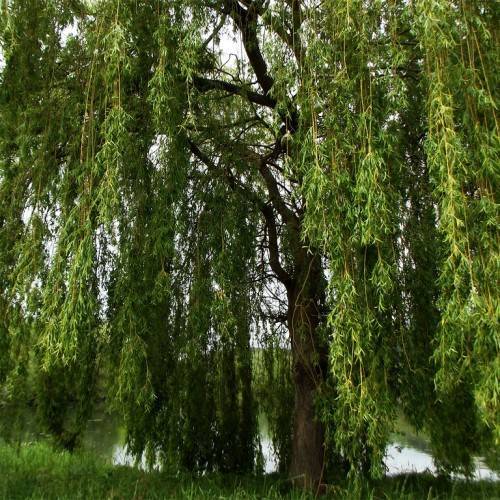
weeping willow
Salix babylonica
Cycle:
Perennial
Watering:
Frequent
Hardiness Zone:
6 - 8
Flowers:
Flowers
Sun:
Full sun,part shade
Leaf:
Yes
Growth Rate:
High
Maintenance:
Moderate
Invasive:
Yes
Care Level:
High
watering
Weeping willow (Salix babylonica) plants should be watered generously during the first year after planting. For the first 2 months, the soil should be kept lightly moist, but not soggy, and the water should be applied deeply right after planting and every other week afterwards for the remaining 10 weeks of the first year. Once the first year is complete, the plants should be watered deeply once a week during the growing season. During the summer months, the plants should be watered more often and deeply, typically every 4-5 days in areas that experience regular heat and drought. It is important to keep the roots of the weeping willow watered, however, avoid over-watering the plant, as too much water can cause root rot.
sunlight
Weeping willows (Salix babylonica) need full sun in order to thrive and grow. The optimal amount of sun is at least 6 hours per day. If planted in an area with a lot of shade, it likely won't reach its maximum potential. Weeping willows should be planted in an area that gets full sun during the morning hours and partial or dappled shade during the afternoon. This will allow the tree to photosynthesize and create its energy needs without being hit with the intense heat of the afternoon sun. It is best to avoid areas that will get direct afternoon sunlight.
pruning
Weeping willow (Salix babylonica) should be pruned in early spring before the leaves start to grown. Pruning should involve removing dead, damaged, or diseased wood, and shaping the shrub to maintain its natural weeping form. The top should be cut back by approximately 1-third by either removing large branches at their base or by removing smaller branches by their buds. This will encourage more new growth and help reduce overcrowding at the top of the plant. Pruning should also be done to keep the size of the weeping willow within desired bounds. If it gets too large, prune large branches back to 6 to 8 inches from the tree trunk.
